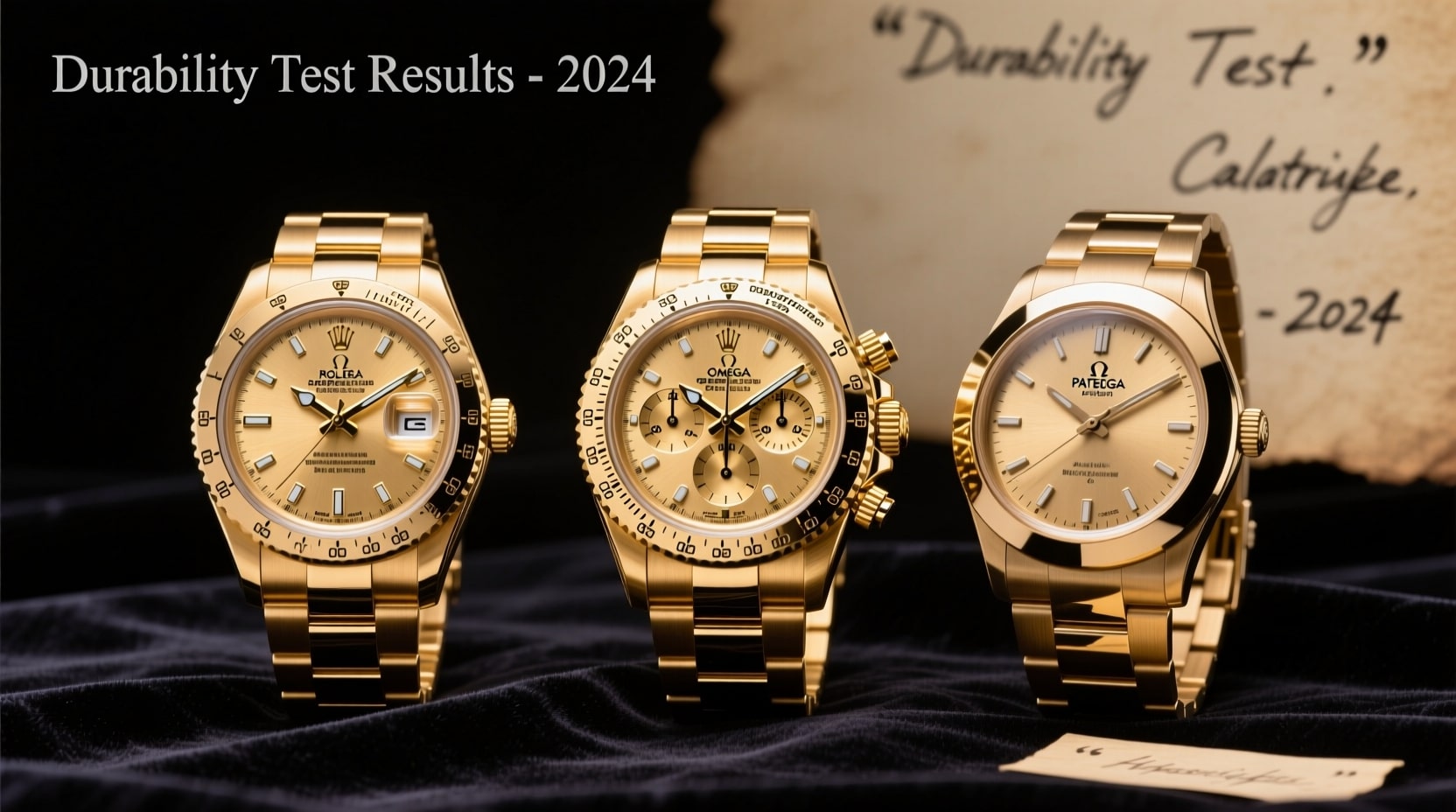
It would almost be a disservice to the entire concept of luxury watch investment when gold is linked to inheritance, achievement, and the timeless elegance that it represents. But for an object that is supposed to be worn and enjoyed every day, the question of durability—the leading question for this article—often arises: how tough are the best gold watches? By popular conception, gold, as it is soft and easy to scratch, is not the ideal metal for rough everyday use. Although there is some truth about gold being soft in its original pure form, the entire world of haute horology has developed some very wonderful solutions to this challenge. That means there is not really just one answer about the toughness of a gold watch, but rather a spectrum that becomes stratified according to different kinds of gold alloy, craftsmanship applied in making the case, and what purpose the timepiece itself is meant for. Keeping these factors in mind is crucial when purchasing a watch that is not only aesthetically pleasing but also durable enough to withstand the test of time.
The Foundation of Strength: Gold Alloys Explained
The foundation of durability in a gold watch is in its constitution; pure 24-karat gold has been too soft for all practical jewelry, so only alloys of gold are used by luxury watchmakers, which means fancy combinations of pure gold and other metals to get materials that look beautiful but are also strong.
The Standard of Luxury: 18-Karat Gold
The 18-kt gold represents the pinnacle of the high-end gold standard in the luxury watchmaking industry. It consists of 75% pure gold and 25% copper, silver, or palladium. This particular composition possesses an ideal balance between the deeply desired rich hue of gold and structural strength and scratch resistance that is palpably better than 18k, making it more favored for the manufacture of luxurious timepieces.
The Practical Choice: 14-Karat Gold
The amount of pure gold in 14 karats is 58.3%. The rest constitutes other metals that are usually used to galvanize the alloy, resulting in a harder, more durable metal than the 18k variant. It is the most recommended option for individuals with busy lives who still want the status and appearance of a gold watch.
The Color and Durability Connection
The mix of alloys is what makes hardness and determines the tint and purity of gold, for each of which there are specific but slightly differentiated durabilities among grades.
The Classic Warmth of Yellow Gold
Classic Alloy: Yellow gold is an alloy made by adding copper and silver to gold. It comes with the typical look of gold without being too expensive yet offers very good durability classes.
The Enhanced Robustness of Rose Gold
Rose or pink gold has that warm romantic hue because of a higher copper ratio. Interesting fact: With more copper content, the alloy becomes more robust and wear-resistant than yellow gold.
The Protective Shine of White Gold
White gold is normally the combination of gold, palladium, or even nickel and, on most occasions, rhodium plated. This rhodium plating is the ultra-tough and scratch-proof part, which gives white gold its bright, silvery finish and protective shell while having to be replated within the years to maintain the perfect surface.
Gold Versus the Titans: A Material Showdown
To understand gold’s standing in the durability scheme, it requires comparison to the other two titans in watchmaking.
Stainless Steel: The Benchmark for Hardness
Stainless steel is still incomparable, the toughest of all materials. It is beyond any gold alloy in terms of resistance against any scratches, as well as quite resistant against dents and impacts. Steel is by far the best-suited metal for a tool watch designed to be irreplaceable in extreme environments.
Titanium: The Lightweight Powerhouse
Titanium goes even beyond and further, being light in weight as compared to steel and having high corrosion resistance. Also, it is harder and more scratch-resistant than gold. The fact that it is hypoallergenic is a plus for people with sensitive skin.
Embracing the Patina of Precious Metal
For all that comparison, this does not make gold watches fragile; they simply fall into a different category. A gold watch screams that it is luxury and artistry. The understated scratches and mild patina a gold case gets over ages of wear are often accepted by aficionados as part of the watch’s personalized character and history—the story of a life well lived.
Engineering for Resilience: How Watchmakers Fortify Gold
Some advanced techniques and careful design in their timepieces are used by luxury watchmaking companies as a way to strengthen the resistance of their gold creations.
The Role of Case Architecture
The watch case design and its construction are mature ingredients in the parameter of its resilience. A strong, thick bezel, reinforced lugs, and a strong middle casing will provide an excellent degree of protection against impact and accidental knocking compared to a more streamlined minimalist profile.
Advanced Protective Coatings
Some manufacturers do use a clear coat like ultra-hard ceramic, PVD (Physical Vapor Deposition), or DLC (Diamond-like Carbon) coating over the gold. This forms a kind of microscopic but very tough shell, which increases scratch resistance significantly while still allowing retention of the rich color underneath the gold.
The Integrity of the Bracelet
A golden chain is a structurally complex piece of engineering constantly subject to stresses. Modern designs from top-tier brands feature solid, well-constructed links and secure, robust clasps, which are designed to endure the daily pull and strain of regular wear. A great gold bracelet is not just a marvel of engineering but also a far more resilient piece than its luxurious appearance suggests.
Choosing the Right Gold Watch for Your Life
Final decisions are about marrying the character of the watch with the values and lifestyle of the buyer.
The Occasional and Formal Wear Timepiece
If it is to be worn mostly for special occasions, formal dinners, or business events, then an 18k gold watch from any top manufacturer shall serve more than well. Commonly, there aren’t any big impacts; rather, the watch should maintain its luster with some tender loving care through generations.
The Gold Watch for Daily Adventures
Designing an 18k gold watch with case designs inspired generally by tool watches implies that for the highly mobile individuals, it would be wise. Looking at 14k gold options may also impart peace. A white gold watch, after all, may hide fine hairline scratches under its hard rhodium plating better than a highly polished yellow gold case.
The Strategic Compromise of Two-Tone
To most, the two-tone watch presents the compromise. A two-tone design melds the robust steel case and bracelet with the gold accents on the bezel, center links, and crown. This technique gives the glimmering charm of gold in the most visible areas, whilst most of the watch back and outer links of the bracelet are being constructed from grueling stainless steel that resists scratching.
Final Thoughts: The Best Gold Watches
To conclude, the old story that gold watches are fragile does not stand scrutiny by the properties of pure gold versus those of more refined alloys used in fine watchmaking. While truly nothing can compare in brute strength to stainless steel or titanium, the best gold watches are, in fact, engineered to resist far more than popular conception assumes—a blend of luxury material, artistic craftsmanship, and practical durability. Thus, it is not about looking for the strongest material but about choosing a timepiece with a character similar to your own; after all, a precious metal case will gracefully age along its life, as does yours.







